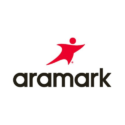Aramark Uniform Services
A single repository of data users across dozens of markets can report on


Aramark Uniform Services is a division of Aramark, a leader in professional services, providing award-winning food services, facilities management, and uniform and career apparel to health care institutions, universities and school districts, stadiums and arenas, and businesses around the world. Employing 14,000 people with annual revenue of roughly $1.5 billion, Aramark Uniform Services estimates its employees wash 4.5 million pounds of laundry, complete 20,000 orders, and drive 400,000 miles each day.
Challenges
Like most companies, Aramark Uniform Services underwent a transformation to adapt to the changing economic conditions of the past several years. The IT department found it was unable to keep pace with the changing technology needs of the business because it was tied to different legacy systems. The IT organization began a company-wide technology transformation initiative named ‘Cornerstone,’ which represented an overhaul of the entire IT infrastructure and application framework. IT planned to consolidate from seven data centers down to two and replace all core enterprise business systems with modern packaged software solutions.
The first phase of Cornerstone involved the re-implementation of Oracle E-Business Suite for the company’s core ERP system. The second phase will involve replacing a route accounting system to run the more than 200 Aramark laundry sites across the U.S.
In conjunction with these efforts, IT worked to develop a foundation for unified reporting and data management across the enterprise. The desired reporting foundation would involve an enterprise data warehouse with an operational data store and a common reporting solution. A critical success factor for this project is the ability for the reporting foundation to tie together Aramark’s rental business with its direct sales business, which previously had been two distinct entities.
“With all of the different databases across our enterprise, our data was spread out everywhere,” said Kevin Loo, Director of Data Architecture, who architected the enterprise data management strategy within Cornerstone. “Our vision was to consolidate and eliminate a lot of the legacy critical systems, employ a best practice and governance process on one single system, and unify our reporting tools. A lot of the reporting had been done previously by just extracting data and dumping it into Microsoft Excel and we wanted to provide more sophisticated reporting capabilities to our business users.”
Solution
Aramark’s IT department took a systematic, practical approach as it chose the components of its new reporting environment, taking into account both IT and end user skill sets and tool familiarity. IT examined the ease of implementation and the total cost of ownership of a packaged analytics solution in terms of how much customization would need to be done versus how much content would be available out of the box.
IT also considered a build versus buy scenario and gathered information detailing the time and cost it would have required for them to build a customized Oracle reporting environment versus what resources would be required for reporting within a packaged analytics environment. “We didn’t have ETL expertise and knew that would be a requirement if we were to follow the build strategy,” said Loo.
“We took the opportunity to examine what hadn’t worked in past projects and then made the necessary changes, including selecting a BI partner with the right analytics solution,” said Michael Beattie, Vice President of IT Planning and Support. “We focused on leveraging the applications for better integration from a transaction endpoint through to reporting for business analysis. We put a great deal of thought into how we wanted to set up the chart of accounts and what type of data and analytics we wanted as part of the outcome of this initiative and then chose Angles for Oracle to help get us there.”
Results
Aramark completed the first phase of the Angles for Oracle analytics implementation, which includes integration with the Oracle ERP platform in order to create a single repository of data that users can report on. The next step was to pull in the remaining operational data including CRM (Salesforce.com) and Route Accounting.
Management will now have the opportunity to release reports to dozens of market centers (sites that manage a group of regional locations) containing information about region-specific Profit & Loss, General Ledger, Balance Sheet, Fixed Assets, Inventory, etc.
Approximately 150 end-users at the market centers benefit from these initial reports, and once the route accounting system information is included in the reports, an additional 300 to 500 users will leverage that information.
Though Aramark Uniform Services was still in the implementation phase at the time of this writing, IT expected 600 initial users across sales, marketing, finance, and operations to benefit from the new reporting capabilities.
We eventually determined that a packaged analytics data warehouse solution would be best for our needs and selected Magnitude Angles for Oracle due to the metadata-driven technology. Angles for Oracle also offered the ability to provide content that integrates with the Oracle Business Intelligence platform and other BI reporting tools we have in place, which was critical to our enterprise data management strategy.